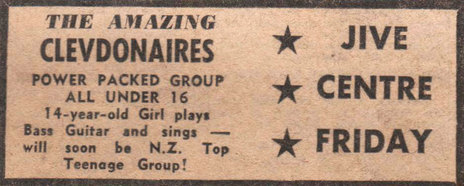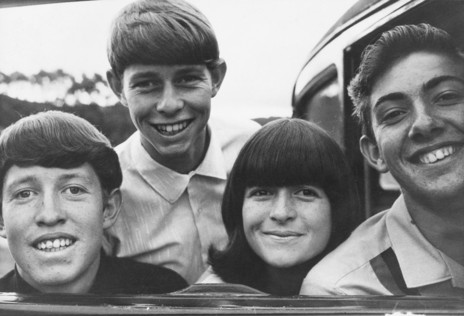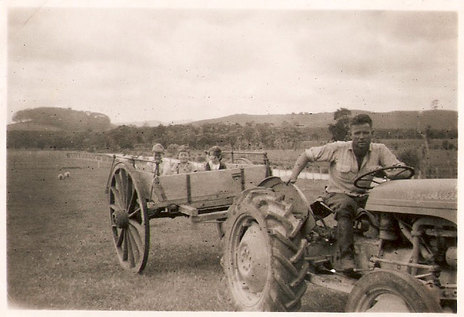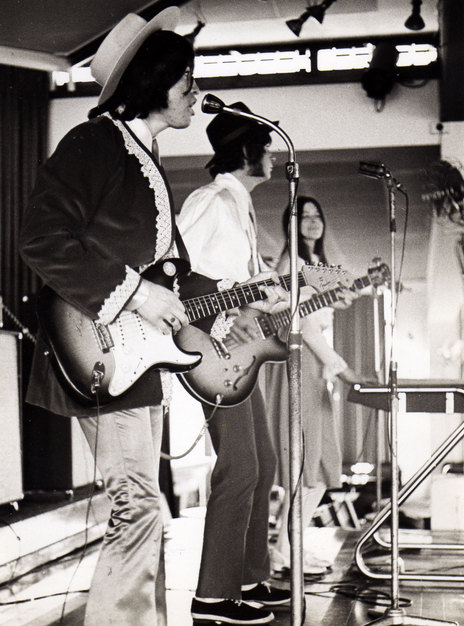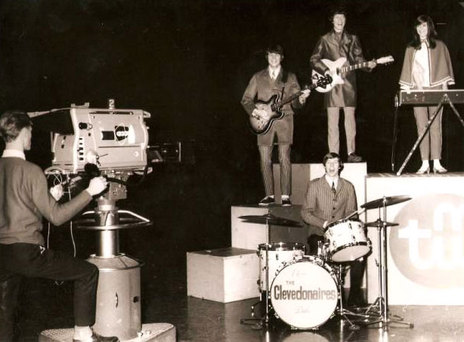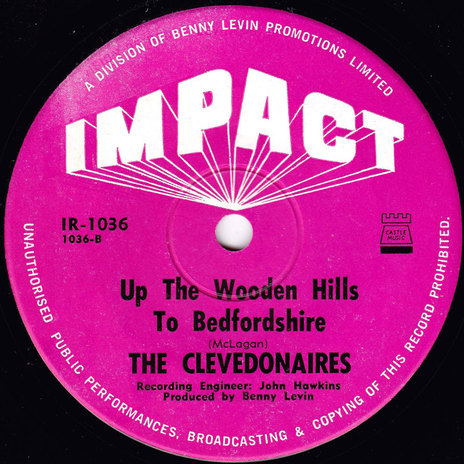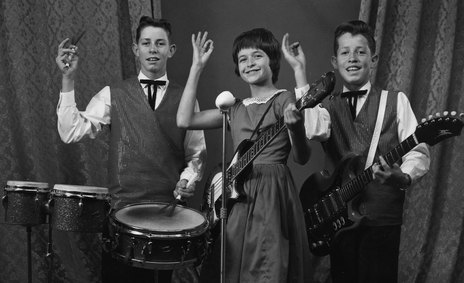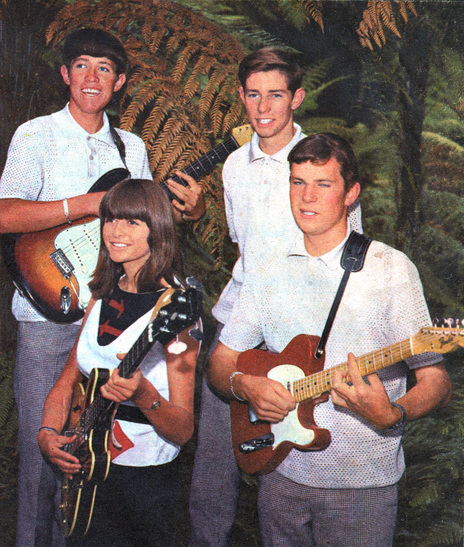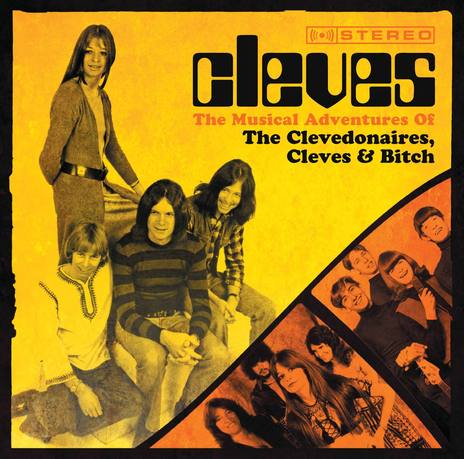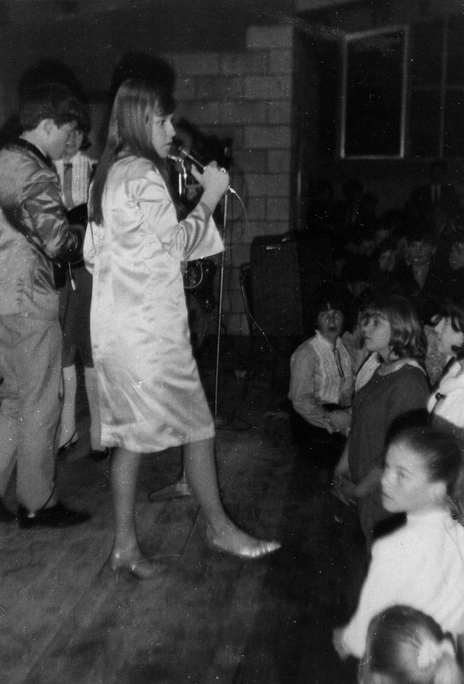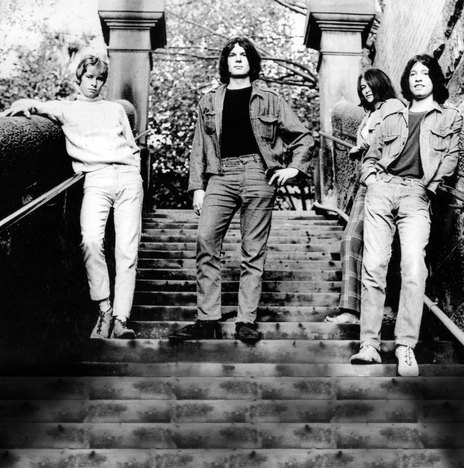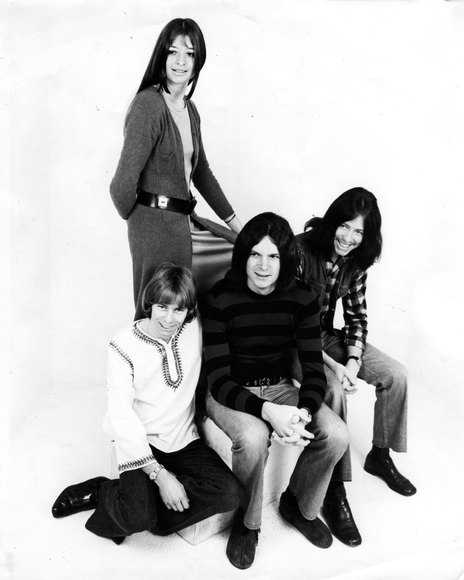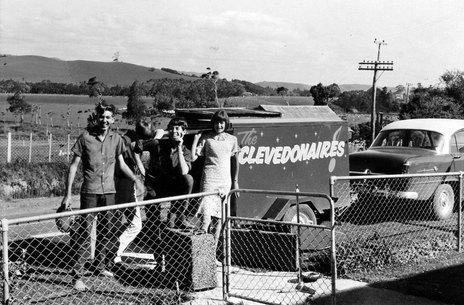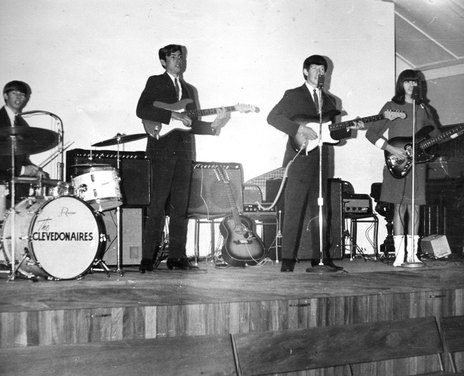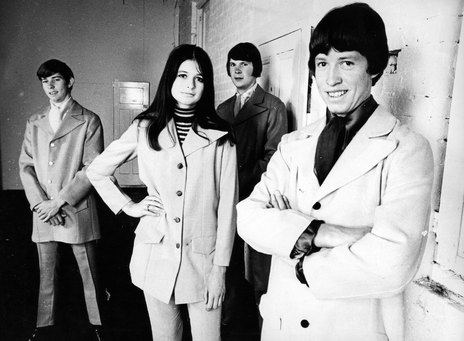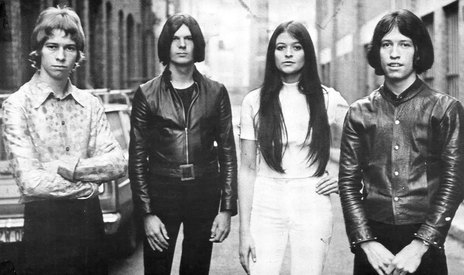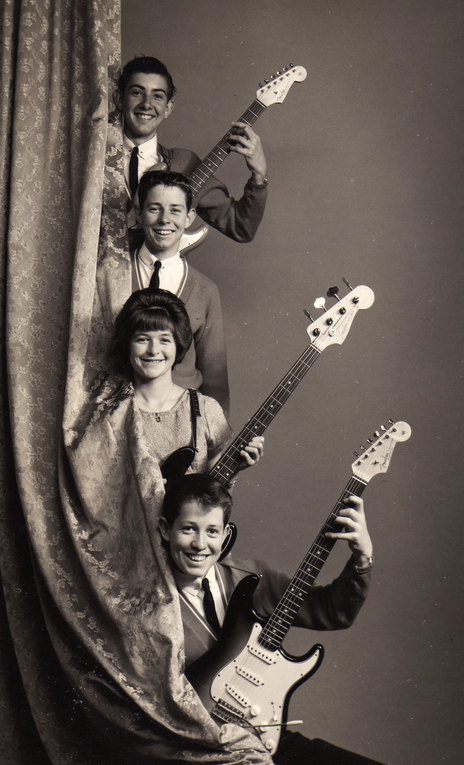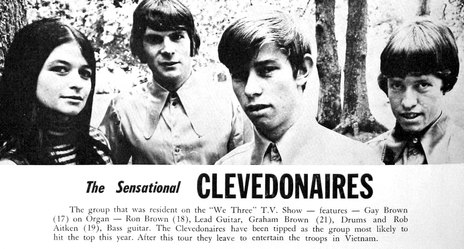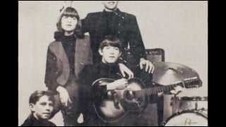Graham, the oldest, began playing the piano before switching to a set of drums. “I found them in the local scout hall,” Graham admits. “They hadn't been used for 50 years, and had previously been used in a turn of the century brass band.”
Ron, the middle one, started playing ukulele and banjo before progressing to his first electric guitar, a Framus, and began teaching himself the latest Shadows hits. It was no surprise when Gaye (the youngest) started learning classical piano at age seven. “My musical ambition was to become a music teacher,” recalls Gaye. “After studying for eight years, I sat my ATCL degree (Associate of Trinity College London) but failed by five points. They said that I wasn’t quite mature enough, hardly surprising, I was only 15 at the time.”
Younger days
In the early sixties, with Gaye learning piano and Graham receiving drum lessons from Frank Gibson, Bill Brown arranged for his three children to have singing and choreography lessons with Pat McMinn of ‘Opo the Crazy Dolphin’ fame. It was at an early talent quest when Ron and Graham were performing as a duo, that they were first introduced as “The Clevedonaires” by Lou Clauson (of Lou & Simon), and the name stuck.
"I was 10 years old and the bass was about the same size as me.” – Gaye Brown
While still at school during 1963, The Clevedonaires started to become a bit more serious about their music and decided to form a four-piece band. School friend and neighbour Milton Lane was recruited on rhythm guitar and took his place alongside Ron (guitar) and Graham (drums), while Gaye was weened off the piano to handle the bass duties. “I quickly had to learn the bass,” she recalls. “I had a handful of lessons from Ron’s guitar teacher and learnt the rest from a manual, I was 10 years old and the bass was about the same size as me.”
After several rehearsal sessions as a four-piece the group were soon ready to take their first tentative steps into the world of pop music. Proud parents Bill and Joy Brown supplied the emotional encouragement and support while physically handling the day-to-day management and transportation duties. “Mum and Dad would drive us to gigs and either sit and wait outside in the car or come inside while we played,” recalls Ron. “Later on when we got a little bit older it wasn’t very cool to have the olds in view, so we used to send them away and arrange for them to pick us up later.”
The Clevedonaires quickly built up a good local reputation with a mix of Shadows instrumentals, pop hits of the day and four-part harmony folk numbers. One local newspaper reviewed their performance in a local concert as “In the parlance of the day The Clevedonaires put across song and rhythm with zest, zip and captivating ease.”
The Auckland scene
As The Clevedonaires' reputation grew so did their territory and by late 1965 they were mixing it in the competitive Auckland city scene where they played at some of the top venues including The Shiralee and the Jive Centre. A regular gig at the Surfside Ballroom on Auckland’s North Shore soon followed. The trials and tribulations of regularly playing on the other side of the city soon paid dividends for the hard working Clevedonaires when they were spotted by promoter and record label owner Benny Levin, who signed them to his new record label, Impact Records.
Local songwriter Darryl Lawrence submitted two songs in a semi folk style to Benny for consideration as their debut single – ‘How You Lied’ and ‘Rooftops and Chimneys’. Both songs were subsequently recorded and released as the group’s first single. Although not a chart hit the record found favourable reviews, with the groups four-part harmony and musicianship singled out for special praise. By late 1966 the group had amassed a repertoire of 300 songs with Gaye now assuming the role of musical director, a task that came easily to her through her classical training.
By early 1967 The Clevedonaires' workload as a semi-professional group had increased. During the day Graham, Ron and Milton helped out on their respective family farms while Gaye finished her schooling. Farming, gigging and rehearsing every second night was not easy. Milton found the workload too heavy and decided to leave.
Enter Rob Aickin. “As a student I saw The Clevedonaires play at several local dances and was so impressed by them that I bought my first guitar and took lessons from Dave Donovan (a local jazz player). I practiced my arse off and joined a newly formed group called The Four Quarters on rhythm guitar and lead vocals. I think we only did one or two gigs but one was support to The Clevedonaires. After Milton told them he was leaving they approached me … wow ... my big break.”
Rob took over the bass guitar from Gaye, who in turn introduced keyboards to the group’s sound, which was in the process of changing to a more rockier format. “We decided to drop the folky stuff from our repertoire," reflects Ron, "and started doing a lot more of the harder edged British stuff from The Animals, The Kinks and The Yardbirds etc.”
A harder sound
The new harder-edged sound of the group manifested itself on both sides of their second single, released in March 1967. The A-side ‘He's Ready’ featured Gaye on vocals as the group stormed through a rocked-up version of a slow soul ballad originally recorded by American girl group The Poppies, while the B-side was a cover of The Yardbirds' album track ‘Lost Woman’.
The group auditioned for The We 3, a weekly television magazine show aimed at teenagers. After several days of auditions the show’s producer picked The Clevedonaires as his resident group from some of Auckland’s leading and up and coming groups.
Four days before their first TV appearance, tragedy entered the lives of the Brown family.
Now with their own 25 week slot on a major television show the world briefly seemed to be their oyster, but four days before their first TV appearance, tragedy entered the lives of the Brown family when their mother Joy died suddenly. It would have been easy for the group to pull out of their first appearance. To their credit they performed live in front of the cameras on the day before their mother’s funeral. For three minutes the group held it together and hit all of the right notes and remembered their cues before returning to their grieving.
Two further singles were released on the Impact label, ‘Funny How Love Can Be’ in late 1967 and ‘Sunny Goodge Street’ in early 1968.
Australia beckons
With an ever-increasing profile, The Clevedonaires were approached by an Australian entrepreneur to do a four month tour, entertaining American troops in Vietnam. A contract was signed that required the group to present an hour-long variety show featuring sing-alongs, big show numbers and pop music, two shows a day, seven days a week. The group quit their day jobs and canceled all engagements for a month to concentrate on rehearsals while Gaye busied herself on the sewing machine making the required costumes. When the contract was first signed the war in Vietnam was in a truce but halfway through the group’s rehearsals the 1968 Tet Offensive was launched. The May Offensive started just before they were scheduled to leave. Also of concern was the discovery that their airfares were only one way. With a government warning in place and the constant bombing of Saigon, the group had no option but to pull out of the contract.
All dressed up with nowhere to go and no bookings, the group decided to try their luck in Sydney. The group flew into Sydney and headed to the ski resort town of Cooma, situated in the Snowy Mountains, where Benny Levin had arranged a regular gig at the Cooma Hotel. Later that night they were playing their first gig as Gaye recalls, “We headed straight to the Cooma Hotel and played until midnight, by which time we were knackered. We were then told that we had to go to a club down the road and play until 3am. We lasted for about two weeks before it got too much for us, so we rang Benny to get us out of the deal and we ended up playing in the Hume Hotel in the Sydney suburb of Yagoona.”
Playing six nights a week from 7pm until 10pm, The Cleves built up an unprecedented following among Sydneysiders.
Playing six nights a week from 7pm until 10pm, The Cleves (they now shortened their name) built up an unprecedented following among Sydneysiders who nightly would beat a path to the Hume Hotel. This started to become a problem as “the lounge bar at the Hume Hotel was licensed for 550 people,” says Ron Brown. “Management were turning a blind eye and they were letting up to 700 people in on Friday and Saturday nights, until the cops raided one night and gave the management a bit of a serve.”
The 10pm finish at the Hume meant that the group could take bookings at top inner city clubs Caesars Palace, The Latin Quarter and The Here, where they shared the bill with The La De Da's.
In another NZ connection, the group backed Dinah Lee for several nights at the Hume. Dinah was so impressed that she arranged for her road manager Bobi Petch to hear them perform the following night. At the time Petch worked for Cordon Bleu Promotions, one of the top agencies in Sydney. This resulted in the group becoming the resident band at Lucifer’s, a new discotheque in Sydney, and signing up with the prestigious Cordon Bleu agency.
It was at Lucifer’s that The Cleves were spotted by a talent agent looking for a group to play in an episode of Riptide, an Australian/American co-production adventure TV series starring perennial American B-grade actor Ty Hardin.
Back home
After six months in Sydney the group returned home in December, 1968 with a brand new $2,500 Hammond organ, (a very rare commodity in New Zealand at the time) for a series of gigs around the country. After several engagements in their old stomping ground of South Auckland, culminating in the Xmas dance at the Papakura Table Tennis Club, the group headed to Mount Maunganui for a summer engagement where they shared the bill with The Fourmyula, The Simple Image and The Hi-Revving Tongues.
Chris Parfitt of The Hi-Revving Tongues remembers the new-look Clevedonaires well, “Dave Dunningham, the shows promoter, had lost a lot of money during the previous Christmas period because Radio Hauraki had their own dances in direct competition, so Dave thought right ‘I'll show you guys' so he hired the top bands in the country to blow away any competition. My band was still regarded as up and comers while The Fourmyula and The Simple Image had a few hits under their belts, but it was The Clevedonaires who musically set the benchmark, especially with their new Hammond organ. All of the bands were jealous. They had it set up on stage under a sheet and we all went in when they weren't around, took the sheet off and just stared at it.”
Acclaim in Australia
After the Mount Maunganui shows the group staged a series of farewell gigs before heading back to Sydney. Once back in the Land of Oz, the group picked up where they had left off and they were in constant demand. First up the group were asked to perform a modern adaptation of Hendrik Ibsen's Peter Gynt at Sydney University.
The Cleves’ first Australian recording was a promotional single made for the Marionette Theatre of Australia's production of The Tintookies, a large-scale puppet show on Aboriginal history.
The Cleves were approached by Harry M. Miller to perform at the after party for the Australian premiere of his stage production of the musical Hair on 4 June, 1969. The Cleves would have been the envy of every unsigned band in Australia at the time as this was the party of the decade in Australia, with a veritable who's who of the Australian music industry in attendance. The Cleves impressed all who attended that night as they rocked the night away. The group were signed by Festival Records shortly afterwards and started working with with ace producer Pat Aulton who was also working with another expat group, The Dave Miller Set.
The poppy and almost vaudevillian ’Sticks & Stones’ was released in September 1969 to glowing reviews, and as a cover version was a departure from the group’s heavier live sound. B-side ‘Don't Turn Your Back’ was the first group-recorded composition and highlights the group’s rapidly maturing songwriting skills. Although not a chart hit (except for Hobart) the record received enough airplay to keep The Cleves' name on everybody's lips and complemented the glowing live reviews in the press:
“If you can't get on with The Cleves, then you probably hate your grandmother.”
“The Cleves are original and reasonably heavy, featuring fast and complex guitar work over powerful organ chord patterns.”
“They rely on raw, primitive beats for their excitement, building their songs up with alternate lead guitar and organ work.”
The group was busy gigging at night and by day they kept busy writing and performing advertising jingles. At the end of the year, they won the 1969 Golden Stylus Award for their 60-second Coca Cola radio jingle, chosen from over 200 entries.
In 1970 the group were commissioned to write and record the music for a short film called Michael, directed by a pre-Hollywood Peter Weir. The resulting soundtrack was released as an EP and is a 16-minute, 10-part suite of near perfect pop music segued together to form a thematic whole in a style not to dissimilar to side two of The Beatles' Abbey Road.
The Cleves’ second single ‘You And Me’ was released during May 1970, the same month that they made their 100th appearance on Australian television.
Debut album
In late 1970 the group started work on their album with producer Richard Batchens, who would go on to engineer and produce many of Australia's top acts during the 70s including engineering Split Enz’ Mental Notes.
“We are quite happy about the record," says Rob Aickin. "It was the best that we could get out of the studio. We went in with the intention of laying everything down meticulously and in the end we recorded nearly everything live.”
The Cleves’ self-titled debut album has been described by Australian music historian Ian McFarlane as “a prime example of where psychedelic pop gave way to a more progressive aesthetic. The album is dominated by longer tracks, atmospheric organ/fuzzed guitar interplay and tight vocal harmonies.”
With a heavy touring schedule lined-up, Gaye was exhausted and unwell, so she took four months off and the group recruited Vince Melhouney (ex-Bee Gees) on guitar to fulfill their engagements.
UK-bound
With an offer from Helen Reddy’s manager to tour the United States on the table, The Cleves instead took advice from Vince Melhouney who suggested that they turn their sights to the UK.
Recently married, Graham Brown decided to leave and was replaced by Ace Follington, formerly of The Chain, with whom The Cleves shared the same agency and many a stage.
The Cleves boarded the ship to the UK with two objectives in mind, first to write a batch of new songs and second to change the group's name to something a bit more tougher sounding to reflect their new songs.
When news filtered back to New Zealand on the name change the local Clevedon/Papakura newspaper was shocked: “The group have changed their name again ... they are now called ... wait for it ... 'BITCH’. We don't think that they got that from Clevedon.”
